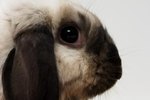
Birds are expressive creatures with a variety of ways of getting their points across. The plumage atop a cockatiel's head can be compared to a human's facial expressions -- the crest reveals how the bird's feeling. Whether the feathers are down flat, at half mast or standing straight up, each posture means something different. Refrain from comparing the crest activity of other birds to that of cockatiels; communication forms differ among bird species, including the status of their crests.
The Curly-Ended Crest
A cockatiel's crest is naturally a little raised, as though someone took a curling iron to the very end of the feathers. This posture generally means the bird is calm and content, and wants to spend time with you. Your cockatiel's crest will likely be slightly curled while out playing, sitting with you or just hanging out in his cage. Each bird has his own personality. Learn what your cockatiel's crest is saying by watching his behavior in different situations.
A Half-Mast Crest
Your cockatiel might be one who consistently keeps his crest at half mast. This is also normal. It means he is alert, curious and generally content. Cockatiels are intelligent. They're constantly watching you and taking in their surroundings, so a half-mast crest is nothing to cause concern. Your cockatiel might raise up his crest when he wants a scratch on the head, is having fun and dancing or is watching something intently.
A Fully Raised Crest
When the feathers atop your cockatiel's head are standing straight up, it's not necessarily a bad sign. Just as a dog raises his ears or tilts his head, a fully erect crest may just mean your cockatiel has heard or seen something he's curious about. Maybe a new visitor is acting in a way that makes him uncomfortable, or he's heard a new and unusual sound, or he's never seen a certain pet before. Simply act normally and remain calm around your bird, and pay attention to any signs that demonstrate your bird's curious or upset.
The Fully Flat Crest
Think of the angry cat flattens her ears back -- the same goes for an angry cockatiel. His crest will be completely flat to his head when he is upset, and he might even hiss at you to show his displeasure. Your cockatiel could be frightened or angry and begin biting or squawking -- both behaviors you should not condone. By paying attention to this sign, you can help calm a frightened bird or put an angry bird away safely in his cage to cool down; perhaps he's uncomfortable with a visiting pet or child.
References
Resources
Photo Credits
-
Jupiterimages/Photos.com/Getty Images
Writer Bio
Alana Krall has been writing professionally since 2008. Her work has been published in "North Valley Magazine," "Vancouver View Magazine," as well as online at VancouverBC.com, YoungEntrepreneur.com and other sources. Krall is currently pursuing a certificate in medical billing and coding.




